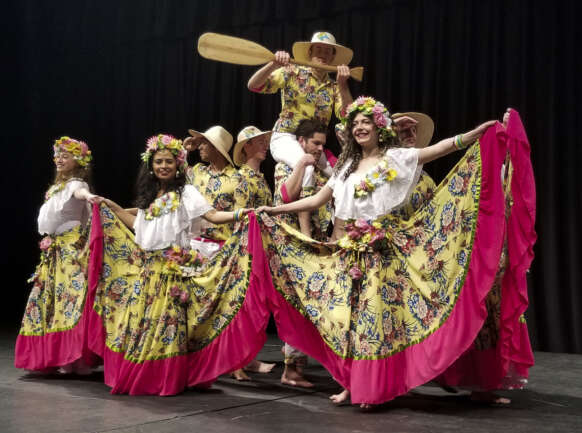Carlos Figueiredo, President of the UVU Brazilian Club, organized a Brazilian culture night with the help of the International Student Council in the hopes of introducing Brazilian culture to the students of UVU, Jan 20.
The event consisted of free Brazilian appetizers and desserts such as delicious chocolate balls called brigadeiros and sweet coconut infused goodies called beijinhos-which translates to “little kisses”. Other popular foods served were the cheese balls, often found at Tucanos, and the teardrop-shaped appetizers called coxinhas that consisted of shredded chicken covered in dough that was battered and fried, in other words, deliciousness.
The evening included performances showcasing Brazilian culture such as popular songs like “Tico-Tico no Fubá” which many of us may recognize as one of the songs played in Walt Disney’s animated movie, The Three Caballeros (AKA Los Tres Caballeros).
Other aspects of the performances included a fashion show to demonstrate not only traditional Brazilian clothing, such as the clothing worn during Brazilian folk dancing, but they also featured traditional outfits common to other countries including Japan, Italy, and a couple countries in Africa.
One of the highlights of the night was the martial arts dance performed by Utah Valley Capoeira, Orem’s local Capoeira martial arts school. The hosts kindly informed the audience of how the Capoeira was “a martial art form that combined elements of fight dancing and music that was created by the slaves as a way to practice martial arts without being discovered.”
Finally, the last performance of the night consisted of the Brazilian folk dance Carimbó, which was performed by the non-profit organization, Aquarela do Brasil. The director of the group, Ana Halsey, discussed the group’s main motivations to perform.
“[Our] primary goal is to preserve the history, art and culture of Brazil,” Halsey said. “The group promotes cultural diversity through the art of Brazilian dance. It is our hope to entertain, enlighten and share with the general public the traditions of Brazil.”
Carlos Figueiredo, who is also a member of the group, explained some background on the dance by discussing its origins as coming from the state of Pará, Brazil.
“The first inhabitants of Pará, the Tupinambas Indians, would use hollow wood and animal leather to make drums. In the Tupi language,” Figueiredo said, “‘Curimbó’, meant hollow stick that produces sound. From the sounds of the curimbó drum, the natives invented the most popular dance of Pará–the Carimbó.”
After all the performances had finished and the raffle prizes were delivered, there was only one thing left to do to make the event a true Brazilian party: dance. For the reset of the evening, DJ Azuquita blasted a mix of Brazilian folk and modern music and invited the excited crowd to happily dance the night away.










